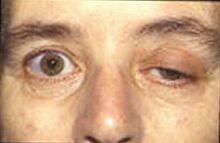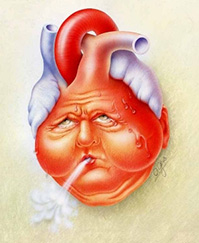Localized scleroderma can be subdivided in linear and morphea:
Linear scleroderma - "coup de sabre", which gets its name because it appears like a scar from a blade. This is usually limited to dermatomal distribution and is common in younger patients.
Morphea - can be circumscribed or generalized or focal. There is significant variability within this group, with multiple subtypes. Morphea often spares the face, which is helpful in separating this from systemic sclerosis.
Limited cutaneous systemic sclerosis (lcSSc) - have cutaneous changes limited to the hands and forearms, on formthat is well described is CREST:
1. Calconisis cutis
2. Reynauds
3. Esophageal dysmotility
4. Sclerodactyly
5. Telengactasia
Diffuse cutaenous systemic sclerosis (dcSSc) can have additional clinical manifestations including:
1. Vascular abnormalities: Reynauds
2. MSK: myalgias, arthralgias, fatigue. Inflammatory arthritis is uncommon. Osteolysis and bone destruction can occur.
3. Pulmonary: interstitial lung disease or pulmonary hypertension can develop. This can be quite debiliatating for patients.
4. Cardiac: arrhythmias, pericardial and myocardial disease. Myocardial disease is felt to be secondary to small vessel spasm, similar to Reyanaud's phenomenon.
5. Renal: "Renal crisis", with azotemia, hypertension and bland urine sediment.
6. Neurologic: multiple different types of neuropathies have been described, with autonomic, peripheral, cranial and entrapment documented.
Another entity is systemic sclerosis sine scleroderma, which has internal organ manifestations without skin findings.
As mentioned today, there is an increased risk of malignancy, both lung and GI, though the mechanism for this is unclear. Smoking was found to be a risk factor in previous studies.
The case discussed today involved a patient with systemic sclerosis with acute on chronic kidney injury, which always raises the possibility of renal crisis. This is defined by an acute, progressive worsening of renal failure, increased blood pressure and bland urine sediment (mild proteniuria with few casts/cells). Up to 80% of patients with SSc will have renal involvement, with only 20% experiencing renal crisis. Average BP in these patients was found to be ~ 175/105, with signs suggestive of hypertensive emergency (encephalopathy). Additional tesing can reveal microangiopathic hemolytic anemia, with schistocytes and low platelets. Risk factors include severe skin disease, corticosteroid use, cyclosporine use, and anti-RNA polymerase antibodies.
Another entity is systemic sclerosis sine scleroderma, which has internal organ manifestations without skin findings.
As mentioned today, there is an increased risk of malignancy, both lung and GI, though the mechanism for this is unclear. Smoking was found to be a risk factor in previous studies.
The case discussed today involved a patient with systemic sclerosis with acute on chronic kidney injury, which always raises the possibility of renal crisis. This is defined by an acute, progressive worsening of renal failure, increased blood pressure and bland urine sediment (mild proteniuria with few casts/cells). Up to 80% of patients with SSc will have renal involvement, with only 20% experiencing renal crisis. Average BP in these patients was found to be ~ 175/105, with signs suggestive of hypertensive emergency (encephalopathy). Additional tesing can reveal microangiopathic hemolytic anemia, with schistocytes and low platelets. Risk factors include severe skin disease, corticosteroid use, cyclosporine use, and anti-RNA polymerase antibodies.












